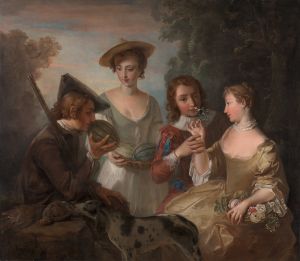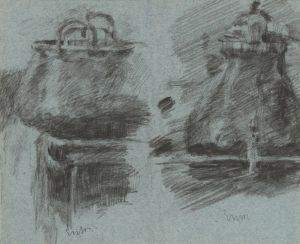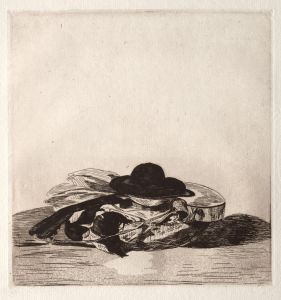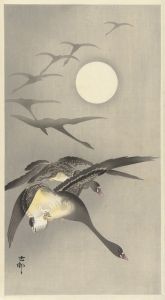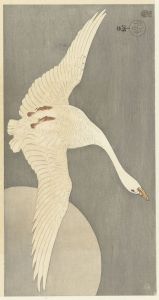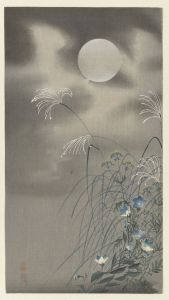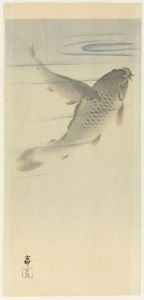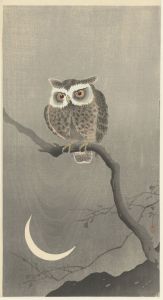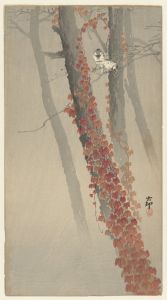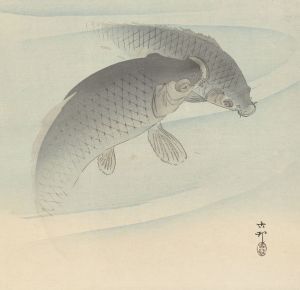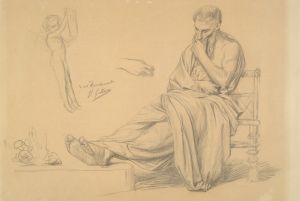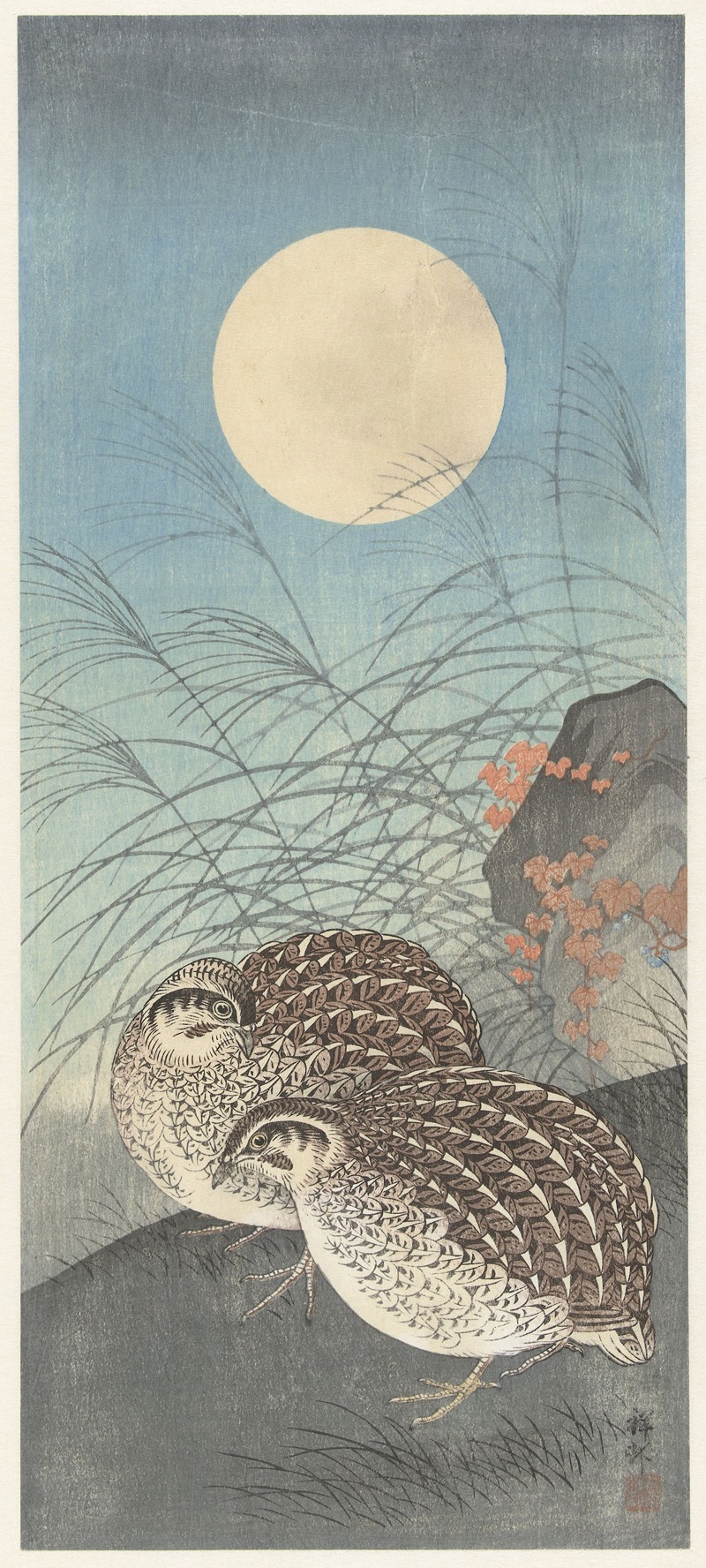
Two quail at full moon
A hand-painted replica of Ohara Koson’s masterpiece Two quail at full moon, meticulously crafted by professional artists to capture the true essence of the original. Each piece is created with museum-quality canvas and rare mineral pigments, carefully painted by experienced artists with delicate brushstrokes and rich, layered colors to perfectly recreate the texture of the original artwork. Unlike machine-printed reproductions, this hand-painted version brings the painting to life, infused with the artist’s emotions and skill in every stroke. Whether for personal collection or home decoration, it instantly elevates the artistic atmosphere of any space.
Ohara Koson, a prominent figure in the shin-hanga movement, is renowned for his exquisite woodblock prints, particularly those depicting birds and flowers. One of his notable works is "Two Quail at Full Moon," a piece that exemplifies his mastery in capturing the delicate beauty of nature. Born in 1877 in Kanazawa, Japan, Koson initially trained as a painter under Suzuki Kason and later transitioned to woodblock printing, a medium that allowed him to reach a wider audience both in Japan and internationally.
"Two Quail at Full Moon" is a quintessential example of Koson's ability to blend traditional Japanese aesthetics with a modern sensibility. The print features two quails, a subject frequently explored in Japanese art due to its cultural significance and symbolic meanings. Quails are often associated with autumn and are considered symbols of courage and endurance in Japanese folklore. In this work, the quails are depicted in a serene and naturalistic manner, set against the backdrop of a full moon. The moon, a recurring motif in Japanese art, adds a layer of tranquility and mystique to the composition.
Koson's technique in this print is indicative of his skillful use of color and composition. The subtle gradations of color and the meticulous attention to detail in the feathers of the quails demonstrate his proficiency in the woodblock printing process. The use of muted tones and the careful placement of the birds within the composition create a harmonious balance, drawing the viewer's eye across the scene. The full moon, rendered with a soft glow, enhances the nocturnal setting, evoking a sense of calm and introspection.
The shin-hanga movement, which Koson was a part of, sought to revitalize traditional ukiyo-e art by incorporating Western elements such as perspective and shading while maintaining the quintessentially Japanese themes and techniques. Koson's work, including "Two Quail at Full Moon," played a significant role in this movement, bridging the gap between traditional and modern art forms. His prints were particularly popular among Western collectors in the early 20th century, contributing to a renewed interest in Japanese art abroad.
"Two Quail at Full Moon" reflects Koson's dedication to capturing the ephemeral beauty of nature, a theme that resonates throughout his body of work. His ability to convey emotion and atmosphere through simple yet elegant compositions has earned him a lasting place in the history of Japanese art. Today, Koson's prints are highly sought after by collectors and continue to be celebrated for their artistic and cultural significance.
In summary, Ohara Koson's "Two Quail at Full Moon" is a masterful representation of the shin-hanga movement's ideals, showcasing the artist's exceptional skill in woodblock printing and his deep appreciation for the natural world. Through this work, Koson invites viewers to experience the serene beauty of a moonlit night, a testament to the enduring appeal of his art.







